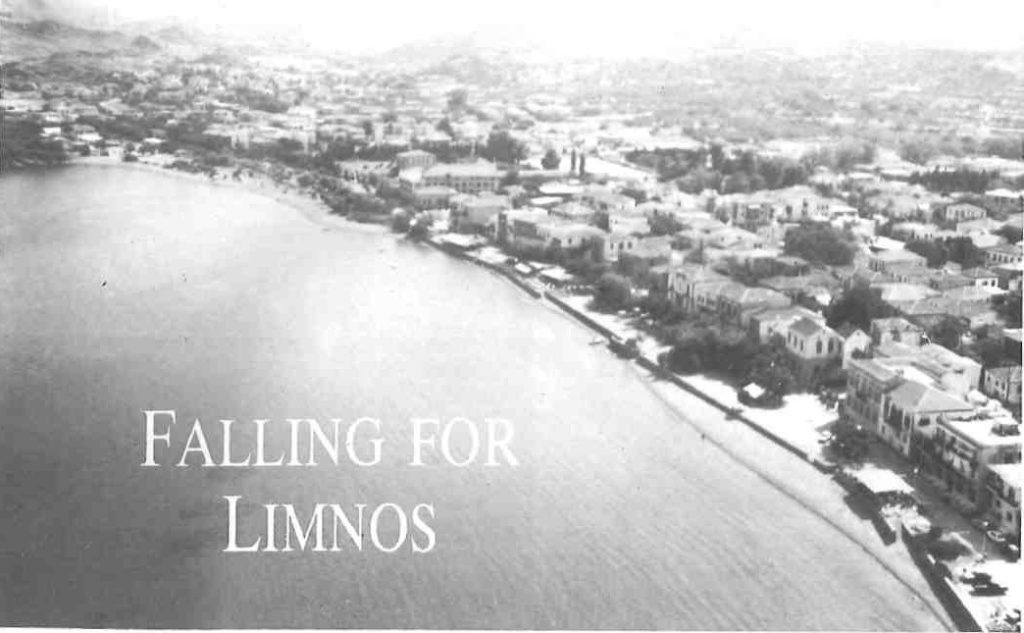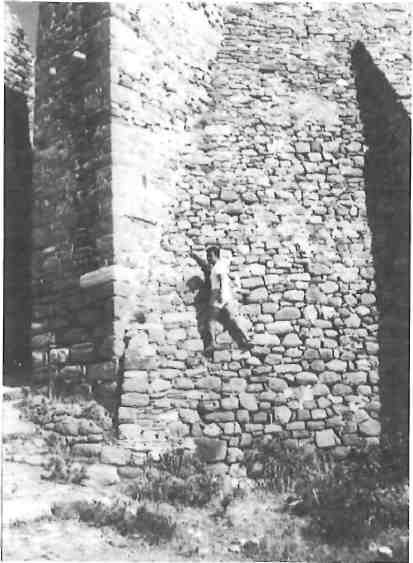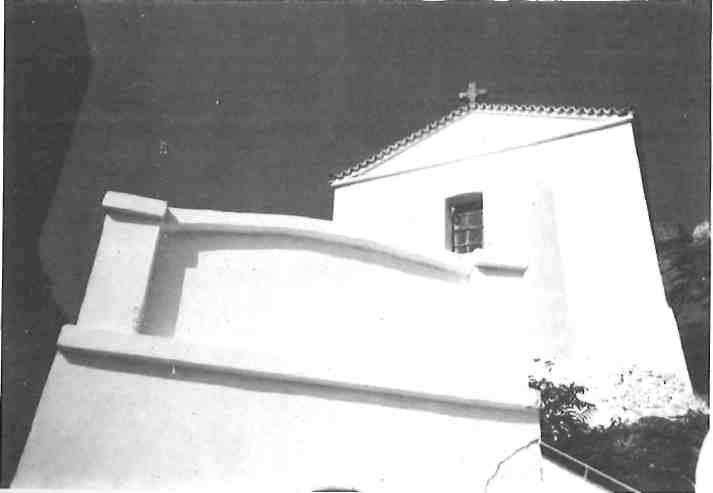Most likely to appeal to the ‘alternative tourist’ the island does not flaunt its attractions, but rewards those adventurous enough to seek out its quiet, modest charms.

Limnos has a very different look from most Aegean islands. It doesn’t immediately invite. Located opposite the entrance to the Dardanelles in the north Aegean between Samothrace and Lesbos, the island is volcanic with an overlay of flat, parched landscape occasionally interrupted by small hills sparsely dotted by stunted shrubs. Due to winds blowing over the Thracian downs from the northeast, the climate is very dry, and while making the hot summer days easily bearable, it is also ideal for anyone suffering from arthritis or rheumatism. Knowledgeable people who come to the island for health reasons make a point of going to the natural hot springs in the west and east.

Hephaestus was the first to really fall for Limnos, and on this account the island became sacred to him. According to myth, he was cast down on it from Mount Olympus by Zeus after a quarrel. One doesn’t have to be Sherlock Holmes to detect from this story that Hephaestus was probably Mr Olympus the Fire God before Zeus came along and overthrew him. Since his fall took him a whole summer’s day (according to Milton), he hit Limnos with considerable force, which accounted for his lameness from then on. Homer sang that its first settlers were the Sindians who nursed the crippled god back to health. Otherwise hostile and unfriendly, the Sindians were reknowned for their metalwork which, according to legend, they learnt from the Great Forger. Present-day residents of the island continue to display excellence in this craft, while their temperament has greatly improved.
Archaeological finds on the island indicate that Limnos had one of the earliest civilizations in the Aegean, reaching its zenith in the third millennium BC. Women’s liberation was enjoyed early on Limnos. Popular legend has it that the women of the island murdered all the men (they got them drunk and slaughtered them in their sleep), and then mated with the less boorish Argonauts who were passing by the island on their way to find the Golden Fleece. Their offspring became, according to legend, the Mycenaeans of the Peloponnese. This myth of mass male murder along with other evidence such as the worship for the Kabeiroi and the Great Earth Mother strongly suggests that Limnos enjoyed a prosperous period of matriarchy.
With its decline, Limnos fell under the depressing male supremacy of Persians, Athenians, Macedonians and Romans. It revived for a while as a part of the Byzantine Empire, but later was conquered again, now by Venetians, Genoese and finally the Ottoman Turks in 1475. In 1912 after the Balkan Wars, it became Greek again. Because of its close proximity to Turkey and the approach to the Dardanelles, there has been a strong Greek military presence on the island ever since its liberation.
Myrina, with a population of only 4000, is the capital and main port lying on the west coast and the best base for exploring the island. There are luxury bungalows available at the edge of town and a few hotels in the centre, but the commonest accommodation (and best value) is in private homes with bed and breakfast. They are more interest-ing and personal than hotels, especially if you stay in one of the older homes where you will probably share a bathroom with other guests.
Myrina is divided into two parts by a steep rocky hill rising from the shore on top of which there is a large Venetian fortress. The climb to Kastro is well worth it and affords a fine view of the town and its three clean, sandy beaches.
Residents of Myrina, not wholly dedicated to gain, prefer a low key approach to tourism. Consequently, there are no discos blaring out at night and no hard-sell antics in the market-place. Rather, tourists are allowed to wander around at their leisure without unwanted relationships or merchandise being thrust at them. Many soldiers stationed at Myrina and elsewhere on the island usually spend their free time here, but for the most part they are very well behaved young men and do not disturb the tranquility of the town -which is more than can be said of certain NATO-base areas on other islands which will be discreetly left unmentioned.
In terms of sights to see in Myrina, there are some well-preserved, still-inhabited old Turkish mansions along the shore and an extremely interesting and thankfully small museum which houses most of the finds excavated at ancient Myrina, Ifestias and Poliohni. For the delights of dining there is an abundance of fresh fish to choose from but be sure to have the local speciality, grilled lobster, with Limnos’ excellent white wine. The island is also known for its feta cheese and delicious honey.

Public transportation around the island is awkward since buses depart from the villages to Myrina crack of dawn (or before), so that country folk can shop and trade in the capital, and then return in the afternoon. As a result, cockcrow time is the most sociable hour in the rural cafes, as any seriously travelled philhellene knows and enjoys. If you are based in Myrina, then you’ll have to leave for a village in the afternoon and return the next day. The most practical way to see much of the island is to rent a car or motorbike.
Thirty kilometers northeast of Myrina is the small village of Repanidi, location of Limnias Gis, a reddish-brown soil which during ancient times and the Middle Ages was considered to have remarkable healing powers. The soil was used to produce everything from pills to pots, and was extensively exported to centres throughout Europe. Three kilometers further along is a slightly larger village, Kontopoli which is near Limnos’ two lakes. Nearby on the north coast is the site of the ancient holy city of Ifestias where Italian archaeologists have uncovered its necropolis, market, temples and Roman theatre. Other finds are on display in the Myrina Museum.
Directly across the island from Myrina on the east coast is another ancient site, Poliohnis, near the small village of Kamina. Like the excavations at Troy, on the mainland just across the way, the site has revealed several layers of settlements built on top of each other, the oldest being neolithic. The fifth layer, dating from the Bronze Age, provided archaeologists with a treasure in gold making the one found in Troy look paltry in comparison. Unexploited, sequestered sandy beaches can be found all along the island’s coastline for those adventurous enough to search them out.
Limnos can easily be reached by ship from Athens, Thessaloniki and Kavala or, of course, much more quickly by air from Athens and Thessaloniki.







